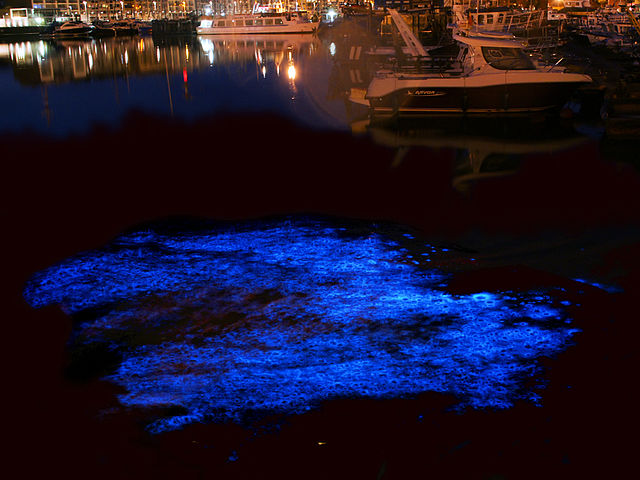

We may earn revenue from the products available on this page and participate in affiliate programs. Learn more ›
Call it the aurora borealis of the sea. The waters off Tasmania, a region perhaps most famous for its devil, are aglow. But this gorgeous display is a sign of something very sinister happening in the sea.
Though the phosphorescence seems other-worldly, the source is decidedly terrestrial. It’s the dense neon bloom of Noctiluca scintillans, or sea sparkle, a type of algae nicknamed “the vacuum” of the sea (because of its voracious feeding tendencies). Scientists have a few theories as to why these protists glow. It might be to scare away their predators or, in a classic case of ‘the enemy of my enemy is my friend’, to attract their predators’ predators.
Tasmania isn’t the only place they appear—sea sparkles show up all over the world. But their presence off Tasmania’s waters is not a good thing: it’s a signal that the waters there are becoming warmer, likely due to climate change, and more ‘nutrient rich’—which, to put it less delicately, means that the area is more polluted with nitrogen, phosphorous, and other chemical and mineral nutrients from agricultural and industrial wastewater.
While noctiluca has been present in the north of Australia since at least the 1800s, it only started cropping up in Tasmania in 1994. In these new digs, noctiluca poses a real risk to local marine life—blooms of this scale often suck up all available nutrients and leave other organisms starving. But hey, they make for some very pretty Instagrams.
View this post on Instagram Wow! This is the first time we’ve had the “Sea Sparkle” up in our neck of the woods, but boy does it delight and leave you in awe! @leannemarshall caught this “splash” of bioliminescence at Rocky Cape last night ?. We’re going to spend the next few days sharing some of our favourite and wonderful captures of this natural phenomenon. If you happened to get a shot of this, don’t forget to tag #tasmaniasnorthwest ? Fun fact we learnt today, “Most bioluminescent organisms – including Noctiluca – have an inbuilt biological clock that tells them when it is night or day, and they will not flash during daytime, even if put into a dark room.” A post shared by Visit Cradle Coast (@visitcradlecoast) on Mar 14, 2017 at 4:18am PDT
